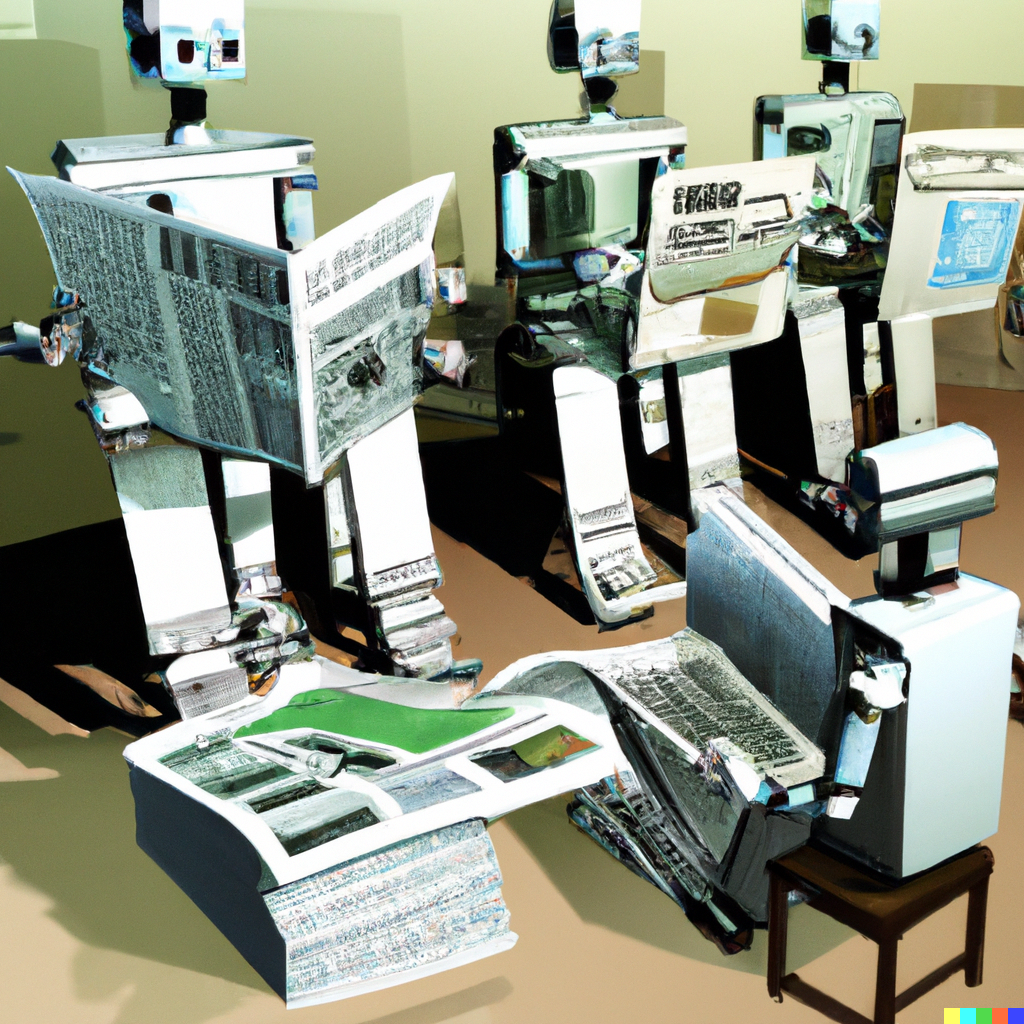AI and Journalism: An Automated Promise of Streamlined Objectivity

By Kian Abadi, BA International Relations and Arabic & Naaz Hussein, BA Politics and International Relations
The world as we know it is constantly evolving, with the materialising of new technologies aiding individuals’ ability to understand, process and solve emerging questions. The forthcoming of ChatGPT can pose multiple questions that challenge our perception of AI. Though many of us, that might be you too, are users of this worldwide phenomenon, it is one that is multifaceted and questions the integrity of one’s writing as well as the overall production of creative knowledge.
Initially, the proposition of AI playing any tangible factor in the world of journalism might seem far-fetched. Journalism as a whole is fundamentally an interhuman endeavour. Still, with the ongoing growth of AI, there is an overwhelming sense of uncertainty about where the world of news production or journalism as a whole will take us. At the most recent SOAS Spirit journalism panel, a panellist said ‘I’ll be in Hawaii, Persecute AI’. But is the technophile drive that is crashing over the world a sign of enlightenment towards the evolution of the journalism world? Could AI aid us writers in being ‘more efficient’ and able to present facts in a more ‘objective’ nature?
Efficiency and factuality in journalism are often a realm deeply associated with ‘breaking news’. This is news that is understood to be, or at least should be, presented as factual and devoid of subjective interpretation. It is exactly in the newsroom where AI is understood to streamline ‘journalistic production’. This has been made clear through Axel Springers’ most recent announcement of designating their newsroom as a leading sight for the future of automation. Their stated rationale is that news constitutes automatable journalistic production, as opposed to journalistic creation, under which they categorise ‘original’ and ‘specialist’ content. Now imagine the newsroom at the NYT, bustling with people attempting to latch onto the newest story, then imagine it filled with a singular system dispelling a simplification of stories into automated jargon.
“43 killed in anti-Muslim violence wave in Delhi”, “4 people killed in Vienna terror attack” “Over 50,000 casualties in earthquake in Turkey and Syria”; straight-forward, factual and nearly devoid of any subjectivity and bias. Right? Of course not. The ‘breaking news’ is far from being devoid of subjectivity. What constitutes ‘terrorism’ and what does the invocation of such a term evoke? What is a ‘wave of violence’? What is the difference between ‘casualties’ and people ‘killed’? What role do numbers play? The use of AI’s terminology and statistics carries a raft of unwritten biases, and its passengers are us, waiting to dismount and tell people the real story. To understand AI’s output as factual news and value it as a form of journalistic work is to deny the raft of biases that it carries.
“The demand for critical and unartifical engagement is pertinent and highlights the need for human journalism, now more than ever.”
What Axel Springer and other AI advocates in the realm of journalism tend to gloss over is the prominent fact that AI systems drawback on an array of human information where human bias itself is enmeshed. These biases aren’t new; the unequal value towards the loss of life has always been prominent in the news world; whose stories and lives are more significant: Ukrainians’ or Yemenis’? To draw on this array of information ridden with bias and churn it into ‘automated news bits’ is to solidify these biases inherent in the language of today’s media and to sideline critical human engagement. Let us not forget, as with humans, AI is also limited. AI systems are programmed to draw on large or, potentially even scarier, limited databases, and we all know what that entails: the establishment of echo chambers.
The potential of (un)wanted homogenization and capitalization in news platforms is daunting. In a world where ‘clickbaitability’ and ‘reader retention’ is becoming exponentially more important, could AI fast-track the transformation of media into a clickbait wonderland? This would leave people with a depiction of the world as a monolithic entity, one that solely serves the purpose of producing attention-grabbing but ‘factual’ news. But what does it even mean to produce factual news? This notion of factual news delineates the production of empathy and resonation that humans create through journalism. To remove humans from the newsroom is to remove humans from the respective truth, and the lack of human critical engagement supplemented with the aid of AI will only continue to perpetuate the known banal term of ‘echo chambers’.
Humans have always resided in this epistemic bubble that we call the world, but to automatize the ways in which we receive news is to perpetuate that notion and leave us unquestioning of the result. With the simple click of an ‘add to cart’, we are submerged and entrenched within a digital world that guides what we feel and what we need. This is what echo chambers create, it is a false sense of understanding ingrained into the human psyche, almost removing our own agency and replacing it with a fallacious form of technologically enabled production of thought.
The demand for critical and unartifical engagement is pertinent and highlights the need for human journalism now more than ever.
Photo Caption: AI produced image (Credit: DAL.E 2).



